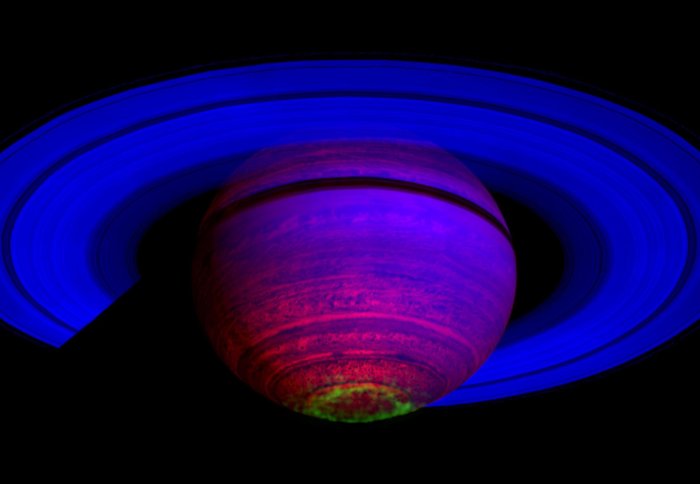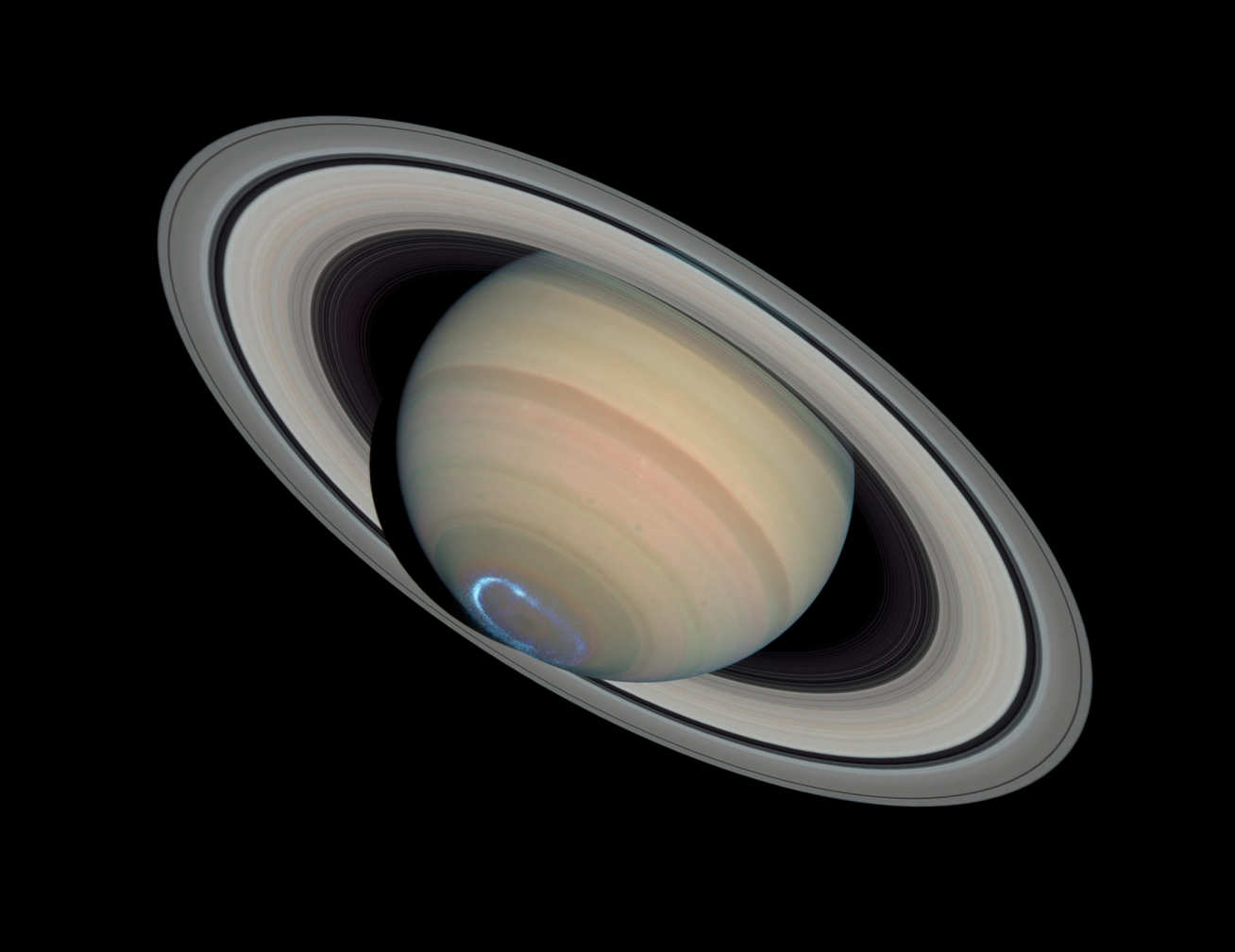Saturn’s ‘energy crisis’ solved with data from Cassini’s final mission

Data gathered by the Cassini spacecraft during the final months of its mission show why Saturn’s upper atmosphere is much hotter than expected.
Scientists have long wondered why Saturn’s upper atmosphere is hotter than would be expected by heating from the Sun alone – a conundrum dubbed Saturn’s ‘energy crisis’. Now, the first global map of temperature in the upper atmosphere of Saturn reveals it is heated by electrical currents created at the planet’s poles.
The situation at Saturn shows that modelling the atmospheres of exoplanets may not be as simple as once thought. Dr Ingo Mueller-Wodarg
As well as solving a longstanding mystery about Saturn, the result could help scientists understand the gas giant planets Jupiter, Uranus and Neptune, as well as the atmospheres of exoplanets orbiting distant stars. The study, which was led by NASA and includes Imperial College London researchers, is published today in Nature Astronomy.
Co-author Dr Ingo Mueller-Wodarg, from the Department of Physics at Imperial, said: “The situation at Saturn shows that modelling the atmospheres of exoplanets may not be as simple as once thought.
“Before we measured Saturn's upper atmosphere, we were wrong in our predictions of its temperature. This shows us that only by understanding the planets in our own Solar System can we better predict conditions on planets around other stars.”
Observations from starlight
The team studied data from Cassini about the uppermost layer of Saturn’s atmosphere, called the thermosphere. Earth also has a thermosphere, which is heated by radiation from the Sun. However, Saturn’s thermosphere is twice as hot as would be expected by solar heating alone, so scientists have wondered where the extra heat comes from.
Previously, only single measurements of temperature in spot locations in Saturn’s thermosphere had been made. However, during the final stage of its 13-year mission around Saturn in 2017, Cassini made a series of very close orbits around Saturn, before finally burning up in the planet’s atmosphere.
During these orbits, Cassini was able to map the pressure and temperature of Saturn’s thermosphere by observing the way the light from several bright stars in the Orion and Canis Major constellations changed as they passed behind the planet.

The results revealed that the thermosphere was hottest at Saturn’s poles, where the thermosphere hosts auroras, which are similar to the northern and southern lights on Earth.
The auroras connect the thermosphere to the magnetosphere, the bubble of magnetic field that surrounds Saturn. The interaction between the two creates electric currents, which in turn heat the thermosphere at the poles.
While this process also happens in the Earth’s thermosphere, the effect is small compared to the influence of the Sun and so is not the main factor determining the temperature.
Making better predictions
Dr Mueller-Wodarg said: “Not all planets have magnetic fields, but it’s clear that when they do, their atmospheres can be heated beyond our expectations, further complicating our predictions of the atmospheres around exoplanets.
“When planets are close to their star, their atmospheres may be relatively easy to predict, as they are controlled by the radiation from the star, much like the situation at Earth. However, the further away from a star a planet is, the more complicated its atmosphere gets, as other factors like magnetic fields may be more important than radiation from the star, as is the case for Saturn.”
As well as showing where the heat comes from, the new study shows how it is distributed from the poles of Saturn down to its equator.
Dr Mueller-Wodarg used a ‘global circulation model’ he had previously developed with colleagues at Boston University and Imperial to determine how winds in Saturn’s thermosphere could distribute the heat.
He found that the presence of atmospheric waves helped move the heat away from the poles, a theory he had proposed previously and has now been validated with Cassini’s data, which showed that such atmospheric waves exist and distribute heat across Saturn.
-
‘A Pole-to-Pole Pressure-Temperature Map of Saturn's Thermosphere from Cassini Grand Finale Data’ by Z. Brown, T. Koskinen, I. Müller-Wodarg, R. West, A. Jouchoux and L. Esposito is published in Nature Astronomy.
Read more from NASA.
Top image: False-colour composite image of Saturn, with the southern aurora highlighted in green. Credit: NASA/JPL/ASI/University of Arizona/University of Leicester
Article text (excluding photos or graphics) © Imperial College London.
Photos and graphics subject to third party copyright used with permission or © Imperial College London.
Reporter
Hayley Dunning
Communications Division